Book of the Day Roundup February 17-21, 2020
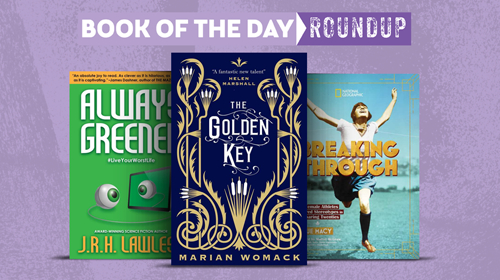
Always Greener
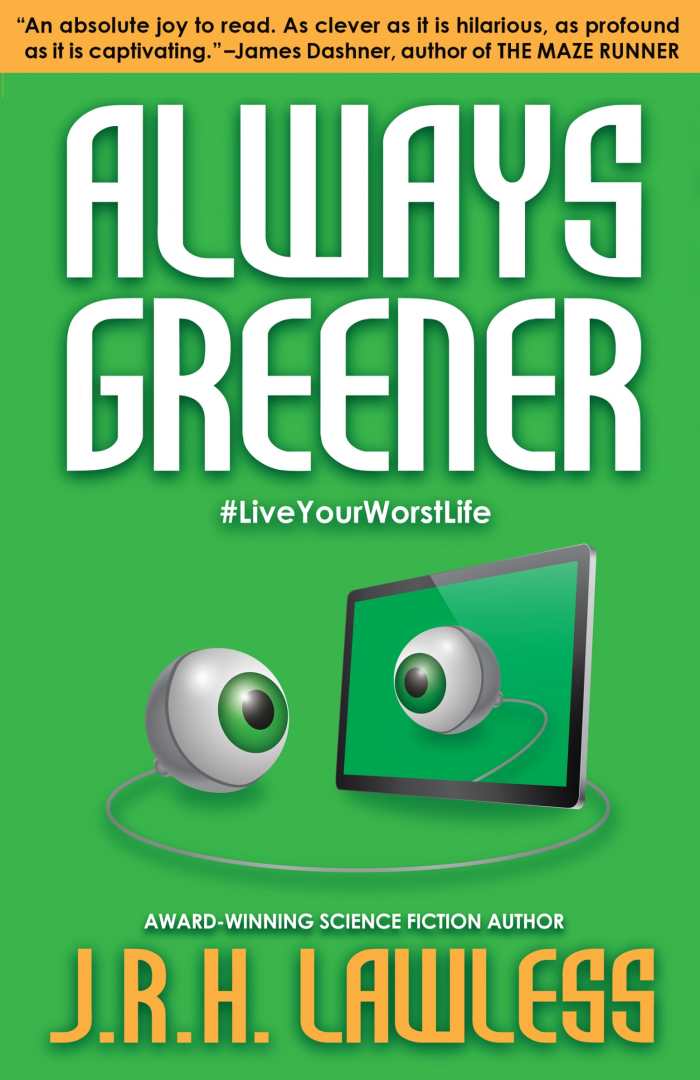
J.R.H. Lawless
Uproar Books
Softcover $16.95 (292pp)
978-1-949671-04-9
Buy: Amazon
Eight ordinary people compete to see who has the worst life in J.R.H. Lawless’s piercing science fiction comedy, Always Greener.
The Grass is Greener is poised to become the world’s hottest new reality show, and Liam Argyle, a down-on-his-luck weatherman, jumps at the chance to host it. But Liam’s dreams of using the show to help others are short-lived. Overwhelmed by mounting responsibilities and jaded by the harsh realities behind reality entertainment, Liam finds himself clinging to his optimism—and his humanity—by the fingernails.
The first of a series, Always Greener paints a bleak picture of a near future wherein personality prevails over logic and decency. In it, every country is controlled by the Corporations, augmented reality lenses that can filter out unpleasant realities in an instant, and everyone has convinced themselves that this is normal.
The contestants on The Grass is Greener range from egotists who relish their fifteen seconds of fame to sympathetic figures who put genuine faith in the system and don’t deal well with their rude awakening. Liam, a struggling alcoholic and cosmic punching bag, has morals but no strength to stand up to the corporate forces that control every aspect of his life. His inner conflict becomes ever more painful as he slides deeper into the amoral muck of show business.
The story’s absurdity and darkness increase in tandem. Unflinching barbs and preposterous situations build and etymological footnotes offer snarky commentary on the proceedings. By The Grass is Greener’s finale, the atmosphere has become so intoxicating that Liam—and everyone else—is swept away in the dystopian tide, whether they want to be or not.
Both a sharp rebuke of where humanity is and a dire warning about where we may be headed, Always Greener is a stinging science fiction satire that takes the downsides of modern living to their hilarious and horrifying conclusion.
EILEEN GONZALEZ (December 27, 2019)
Banned Book Club
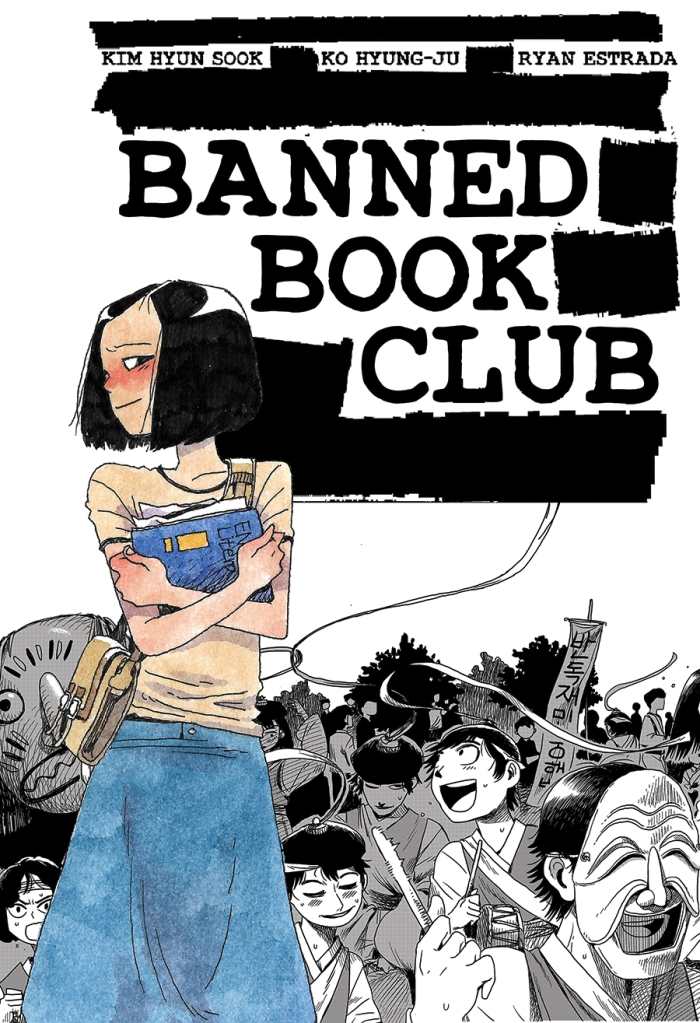
Kim Hyun Sook
Ryan Estrada
Ko Hyung-Ju, illustrator
Iron Circus Comics
Softcover $15.00 (192pp)
978-1-945820-42-7
Buy: Local Bookstore (Bookshop), Amazon
Kim Hyun Sook and Ryan Estrada’s gripping graphic novel Banned Book Club is based on the true story of a South Korean student who learned the costs and rewards of standing up to tyranny.
Though often seen as the antithesis to North Korea’s totalitarian regime, South Korea has its own complicated, and at times unsavory, political history. That history is recounted here, beginning in 1983 as Kim Hyun Sook prepares to leave her poor family and their struggling steak restaurant to attend Anjeon University with the goal of studying literature. Once there, she sees protesters calling for South Korea’s President Chun to step down; she’s invited to join a club that discusses books that the current government has banned. She assists as the club publishes secret newspapers to spread the truth. Their members are tracked by government agents and, in some cases, tortured.
The book’s final chapter jumps forward to end with a striking parallel, as a new generation protests the 2016 corruption scandal that forced South Korea’s President Park from office. The scene is an opportunity for the main characters to reunite and share their experiences; it is a powerful reinforcement of the book’s emphasis on how democracies must be constantly safeguarded through education, vigilance, and action.
Relatable and appealing, the text tackles complex and nuanced aspects of political control, including the power of fear mongering and the dangers of pacification through entertainment, evidenced in the Chun regime’s “3-S” policy: sex, sports, and screens are used to distract citizens from political corruption.
The book’s manga-style art emphasizes and sometimes exaggerates facial expressions, helping to convey the emotions that drive its characters’ actions. Combining real-life political intrigue with an appealing cast, Banned Book Club is an exciting, thought-provoking graphic bildungsroman.
PETER DABBENE (December 27, 2019)
The Golden Key
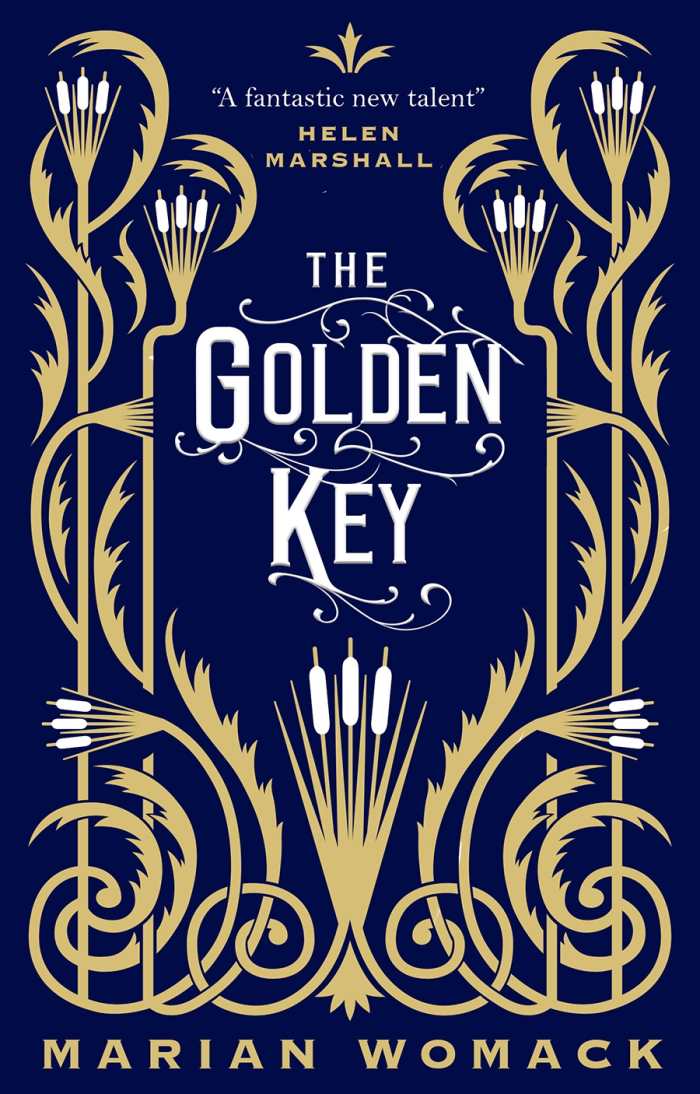
Marian Womack
Titan Books
Softcover $14.95 (320pp)
978-1-78909-325-4
Buy: Local Bookstore (Bookshop), Amazon
Amid the phantasmagorical developments of Marian Womack’s The Golden Key, which include spiritualism, changelings, and cracked doors between worlds, a parable against privilege arises.
At the turn of the twentieth century, three sisters disappeared on the moors. Sam, a boy with no memories who fears the fogs along the fen, entered their stepmother’s life thereafter; he was absorbed into her moneyed circle. Twenty years later, Lady Matthews wants definitive answers about what happened to her girls; she enlists Helena, an investigator who’s tied to spiritualists, to find them.
Helena occupies a liminal space: her lineage includes both gentry and Roma; she studied medicine but is approached most often as a medium. She is fine with being misunderstood if it gives her the cover to solve her cases, most of which involve missing children.
Helena believes in science, not magic. She employs careful reasoning to settle each suspicion, including around Sam’s connection to the girls. Her prying leads her toward answers that she’d rather not consider. Fairy lights dance through the marsh’s mist, tables levitate, and fungi lead to hallucinations, congealing to resemble loping men. To lay the mystery of the girls to rest, Helena is forced to entertain the inconceivable.
A second but amateur investigator, Eliza, helps Helena along, chipping away at her reluctance to believe and pointing toward the spots where the worlds of the fey bleed over. Eliza’s past, and Sam’s recent mistakes, are entryways into discussions of equality and women’s autonomy; both have witnessed and enabled injustices. George MacDonald enters the story as a spirit guide, determined to warn seekers off from seductive realms.
If the worst happens in The Golden Key, it’s because wise women were not believed, or because those with too much power were given dangerous leeway. That lesson looms in the final, horrifying, and entrancing moments of this fairy tale with a twist.
MICHELLE ANNE SCHINGLER (December 27, 2019)
Breaking Through
How Female Athletes Shattered Stereotypes in the Roaring Twenties
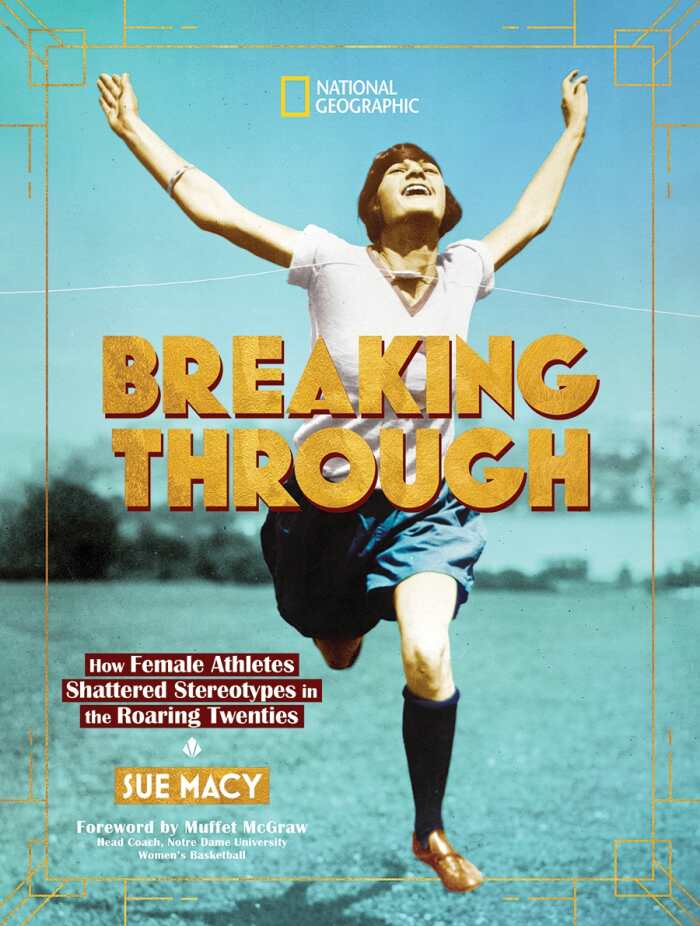
Sue Macy
National Geographic Children’s Books
Hardcover $28.99 (96pp)
978-1-4263-3677-5
Buy: Amazon
Women athletes of the 1920s are seen overcoming stereotypes and opposition in Sue Macy’s uplifting Breaking Through, a text that shows how women defied the odds during a definitive decade for competitive sports.
The 1920s debate around whether women should participate in world-class sporting competitions stemmed from a general rise in women’s participation in physical fitness outlets—seen as beneficial for their strength, though many traditionalists believed that such changes were detrimental to women’s health. Photographs, illustrations, and timelines trace this saga, while sidebars focus on specific critics and trailblazers to deepen understanding.
Focused on the benefits and drawbacks of women competing at the Olympics, the book forwards beliefs about women’s constitutional ability to sustain vigorous athletic schedules and how such beliefs color debates. Any serious injuries or issues, Macy shows, were treated as evidence that women were safer when excluded from the competitive intensity.
While focused on history, the book contains anecdotes and moments of great courage; when one athlete was told that a sporting organization would ban women from participating, she said, “They certainly rule English football, but not the world, thank goodness.” Such quotes keep the text light and exciting.
The content is direct and precise, its perspectives treated with nuance and care. When possible, the book relies on primary sources, including newspaper articles and quotes from athletes themselves. These open a window into the thought processes of the twenties. That decade is situated in the context of other historical events and topics, particularly in relation to greater equality for black Americans and women. A satisfying ending shows that the initiatives of the 1920s reverberated through the following decades, laying the groundwork for continued pushes toward equality.
Breaking Through is a stirring saga that uses excellent visual storytelling to capture a unique time in women’s athletic history.
LAURA LEAVITT (December 27, 2019)
Eat the Cake
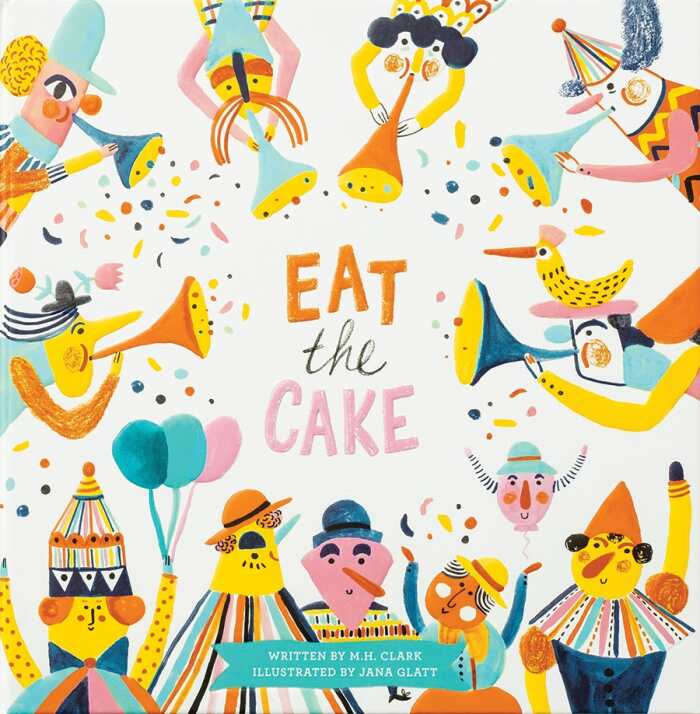
M.H. Clark
Jana Glatt, illustrator
Compendium
Hardcover $16.95 (32pp)
978-1-946873-84-2
Buy: Local Bookstore (Bookshop), Amazon
Get swept up in the excitement of whatever holiday, celebration, milestone, or fresh new day awaits. A plethora of circus-ready partygoers in a riot of colors, shapes, stripes, and polka-dots cheer while parading up, down, and all around in this rash of revelry and merrymaking. Rhymes with a Seuss-like cadence remind everyone to sing loudly, dance boldly, take chances, do dances, and, above all else, whenever possible, always choose to eat the cake.
PALLAS GATES MCCORQUODALE (December 27, 2019)
Barbara Hodge
